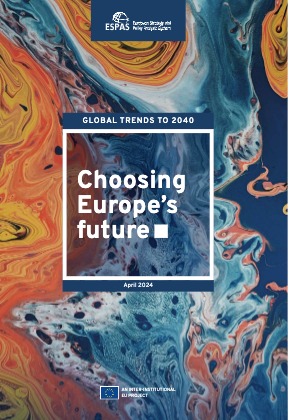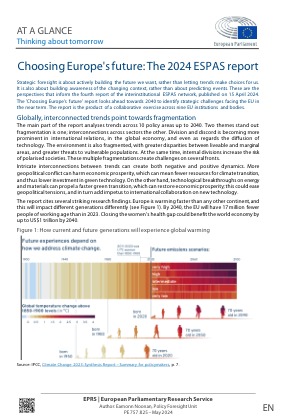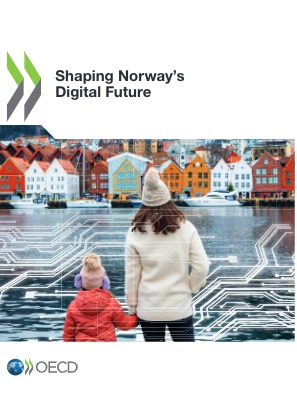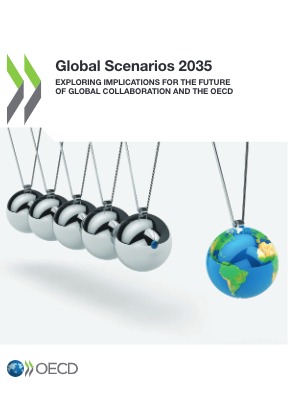The fifth online event in the series of Horizon Futures Watch dissemination workshops eas held on October 25th 2023 and delved into the theme of the future of green skills and jobs. The importance of this topic and its relevance for the green transition was underlined by its many interpretations. Its definition is often difficult to grasp, as the meaning of ‘green’ is comparative and constantly reconfigured. The urgency of meeting the need for green skills, through workforce up-skilling and reskilling, in order to thrive in greener jobs in the future guided the workshop. A broad definition of green jobs was shared early on, taking into account (i) new and emerging green occupations; (ii) green and enhanced skills and knowledge occupations and (iii) green increased-demand occupations.
The green transition’s potential to lead to important implications for reskilling was a key concept running throughout the workshop. In many places, the lack of green skills may in fact be a barrier to the green transition, but there is also ambiguity on what the green transition actually is and which skills it depends on. This uncertainty set the scene for an exploration of the future and for understanding how research policy can approach green skills and jobs. The relevance of green skills spans beyond research and innovation, touching on education, industry, and environmental policy.
The policy brief introduced by the expert team assessed what the green jobs landscape might look like in 2050 and pointed to the existence of 571 skills and knowledge concepts labelled as ‘green’ which cut across all sectors of the economy, ranging from information to communication and management roles. These include new and emerging green occupations, green and enhanced skills and knowledge occupations, and positions in high demand due to green practices.
The proposed scenarios considered dimensions such as environmental pressures, EU leadership in green technologies, along with demand and supply of green workforce, to generate 16 alternative futures. Four of these were examined in more depth:
A – Green, technology-intensive Europe – struggling to fill all the green jobs
B – Apocalypse soon – fighting skills mismatches in a degraded environment
C – Feeling the pain – a workforce left behind in a non-green world
D – Green leapfrogging – old, mismatched Europe surrounded by new green giants
In response to the above scenarios, the workshop discussed overarching themes concerning the interaction between humans and the environment, as well as between humans and technology. The discussion also explored what defines a 'quality' green job and considered the integration of these concepts into R&I policy and the management of related uncertainties. One participant proposed taking into account the fluctuating numbers of incoming and outgoing workers from the EU.For example, if expertise in carbon capture is not locally available, it may be necessary to source this specialized knowledge outside and draw it into the EU. Therefore, green skills and jobs could be viewed as workforce flows, rather than as static sectors and fixed competencies.
Another participant identified the need to harvest the necessary ability to accompany change processes across all sectors. For example, farmers would need guidance to adopt less chemical-intensive methods and must possess the adaptability to frequently reassess their practices.
In their foresight exercise, the experts concluded that a circular economy would likely result from either intense, crisis-driven pressure, or unprecedented cooperation among current industry players. A major requirement is, therefore, cross-sectoral collaboration, thinking in terms of value chains instead of single products. Additionally, the real challenge lies not just in identifying the necessary skills but in determining who will ensure the training and development of these required skills. This would call for an investment in specialised education, making a compelling case for employers to invest in reskilling their workforce. Thus, a synergy between innovation and educational institutions is essential to equip the workforce with future-oriented skills, including AI and data science expertise.
In the second part of the workshop, perspectives on the scenarios were shared by various foresight project representatives. WE TRANSFORM, a project researching the skills needed for the transition to automated mobility, suggested that the scenarios could have depicted not only probable futures but also aspirational ones. Thus, illustrating pathways and actions necessary to achieve those preferred futures would have enriched the scenarios. This point was also echoed by the Connected Factories Project, whose aim was to identify the enablers and cross-cutting factors of sustainability and manufacturing through specific pathways. According to this project, the scenarios presented were valuable not just for road mapping, but also for potential risk analysis. The assessment of AI’s potential impact on the scenarios was considered a relevant addition to make, considering the topic’s prevalence in the discussions.
Consequently, the MLE project pondered on how the EU could maintain control amid growing environmental vulnerability, appreciating the scenarios’ consideration of the relationship between humans and machines, and the implications these dynamics have for the relationship between digitalization and sustainability. A similar point was also made by Strategic Foresight for Sustainabilit project representatives, emphasizing the need for continuous learning and stressing the importance of narrative skills for highlighting transformation points across industries.
The workshop underlined the potential complexity of green skills agendas, acknowledging that while technology will certainly play a key role in the future of green skills, our ‘solution’ lies in our ability to innovate responsibly and integrate technology with sustainable practices.





